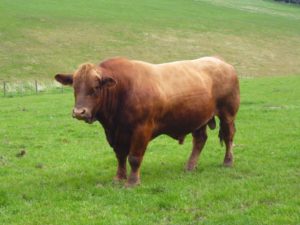Where To Put Stock Bulls Post Mating?
7 June 2017 Having a short mating period means finding somewhere to keep bulls when mating ends. Keeping them together in a group runs a very high risk of them damaging themselves unless they are given a large enough area so they can easily escape. The other problem is it makes it difficult to supplement bulls, especially young bulls who are still growing as well as having to regain the condition they lost over the mating period.
Having a short mating period means finding somewhere to keep bulls when mating ends. Keeping them together in a group runs a very high risk of them damaging themselves unless they are given a large enough area so they can easily escape. The other problem is it makes it difficult to supplement bulls, especially young bulls who are still growing as well as having to regain the condition they lost over the mating period.
A simple solution is to build bull paddocks where individual bulls can be set stocked for the rest of the summer. The key to making them “bull proof” is to use electric fences. These can be either permanent, ie using traditional wooden posts and insulators or temporary. (Having bulls ringed significantly increases their respect for electric fences, the copper ring making an ideal conductor when it first sniffs the wire!) Each pen must have a water supply and possibly a trough for feeding any concentrates which may be needed. To avoid the bull destroying the trough it should ideally be removed once the bull has finished eating ie pulled out underneath the bottom wire. Using electric fences will also help train bulls when they are turned out with cows who are being rotationally grazed.
Permanent bull paddocks can be used for other stock when not needed by the bulls eg cows who had calving difficulties, with their calves so they can be closely supervised before they join the main herd etc. Alternatively gates can be left open and the paddocks grazed along with the main field. Another option would be to use them for rams, while the bulls are working, to help them pick up condition ready for mating in the autumn.
The problem with permanent paddocks comes when machinery is needed eg spreading fertiliser, topping, conservation, etc. With sizes of between 0.3 – 0.5 acre, using modern machinery is almost impossible. In comparison using temporary electric fencing (with the taller horse plastic stakes) gives complete flexibility eg only having them for when they are actually needed for the bulls.
Basil Lowman, basil.lowman@sac.co.uk
Sign up to the FAS newsletter
Receive updates on news, events and publications from Scotland’s Farm Advisory Service
